0 Introduction
With the continuous growth of the load and new energy installation scale in the central and eastern regions,China is facing the challenge of electricity balance and new energy consumption;dependence on the provincial and regional electricity markets can no longer meet the demand.Therefore,constructing a nationwide electricity grid and markets to achieve market-based electricity mutual aid and optimal allocation of resources on a large scale is becoming an effective path for adapting to the characteristics of China’s energy and load.Inter-provincial electricity spot markets have emerged against this background [1-3].
Inter-provincial electricity spot markets make full use of the transmission capacity of inter-provincial channels,promote the optimal allocation of resources and consumption of renewable energy on a large scale,standardize inter-provincial spot trading,and effectively connect with inter-provincial medium-and long-term markets and ancillary service markets to build complete and unified inter-provincial trading systems.However,interprovincial spot markets still face numerous pressures:
1) Risks associated with the safe operation of power grids.China’s ultra-high voltage grid is still in the transition period of development,the network structure is not perfect;the “strong DC,weak AC” structural contradiction is prominent.Owing to the limitations of land resources and terrain,many transmission channels are densely distributed in narrow areas,which can easily lead to large-scale power outages if damaged by external forces.
2) Significant balance pattern changes.In recent years,with the rapid development of ultra-high-voltage power grids and clean energy,the power-balancing pattern has been transformed from a local balance in the provinces to a unified balance in the entire network.
3) Highly volatile new energy generation.The high volatility and uncertainty of new energy generation lead to system peak regulation and frequency regulation contradictions,increasing the difficulty of grid balance regulation and security and stability control [2,3].
Therefore,to guarantee the stable connection and efficient operation of inter-provincial,intra-provincial medium-and long-term,and spot electricity markets,promote the consumption of new energy,and realize the optimal allocation of inter-provincial resources,it is necessary to establish a complete set of inter-provincial electricity spot market evaluation index systems,and comprehensively and quantitatively assess the market operation status,problems,and trends.
Unlike intra-provincial markets,which are balancing markets,their main objective is to optimize the allocation of resources within provinces and ensure a balance of power supply and demand,including the safety of the power supply order.Inter-provincial markets are resource allocation markets that ensure the implementation of national energy strategies,realize the optimal allocation of resources on a large scale,and promote renewable energy consumption.
Therefore,the inter-provincial spot evaluation indexes established in this study focus on the mutual assistance of electricity,promoting the consumption of new energy,and playing the role of market-oriented allocation,considering the characteristics of the inter-provincial markets,price mechanisms,and dispatching operation mechanisms.
1 Development of inter-provincial electricity spot market
1.1 Cross-regional inter-provincial surplus renewable energy spot trading
In July 2017,after the National Energy Administration(NEA) agreed on related policy and rules,the National Power Dispatch and Control Center (NPDCC) officially launched the pilot cross-regional inter-provincial surplus renewable energy electricity spot trading on August 18,2017.In September 2018,NEA agreed to continue organizing the trading pilot work for two years.In terms of market positioning,the market made full use of the available transmission capacity of the cross-regional channels and organized and carried out cross-regional delivery transactions to avoid wasting renewable energy [4].In the past five years,from 2017 to 2021,trading has effectively alleviated the pressure of renewable energy consumption on a large scale while fully verifying the feasibility and effectiveness of the trading mechanism and technical support systems,cultivating the market consciousness of participants,training the market talent team,accumulating market construction and operation experience,and laying a solid foundation for the construction of interprovincial electricity spot markets [5,6].However,there are limitations in terms of the trading scope and participants.
1.2 Inter-provincial electricity spot trading
To further expand the market scope,enrich the trading subjects,improve the market mechanism,and enhance the ability to optimally allocate capacity,the National Development and Reform Commission (NDRC) and NEA jointly approved the “Inter-Provincial Electricity Spot Trading Rules (Draft Proposal)” in November.The State Grid Corporation has carried out trial operations of interprovincial electricity spot trading for two days,an entire week,an entire month,an entire quarter,and half-year settlements since January 1,2022,and is currently continuing to carry out trial operations of continuous annual settlements.In June 2022,inter-provincial electricity spot trading began a half-year trial operation of a continuous settlement in the State Grid Corporation region,further promoting the construction and development of the market.In July 2022,the China Southern Power Grid first conducted interprovincial spot trading,marking a national unified electricity market,which was first implemented in southern China.On October 12,2023,the NDRC and NEA required that the inter-provincial electricity spot markets continue to conduct continuous settlement trial operations and continuously open the market by the end of 2023.
2 Mechanisms of inter-provincial electricity spot markets
2.1 Market operation framework and model
The inter-provincial spot markets are organized and operated by the NPDCC,regional power dispatch and control centers (RPDCC),provincial power dispatch and control centers (PPDCC),Beijing power exchange center(BPX) and provincial power exchange centers,covering multiple types of power generation entities such as wind power,photovoltaic,hydro power,nuclear power,and thermal power at the sending ends,and grid enterprises,retail companies,power users and other entities at the receiving ends,using cross-regional and cross-provincial transmission channels to carry out electricity trading in the day-ahead and intra-day markets [4,5].The trading framework is shown in Fig.1.
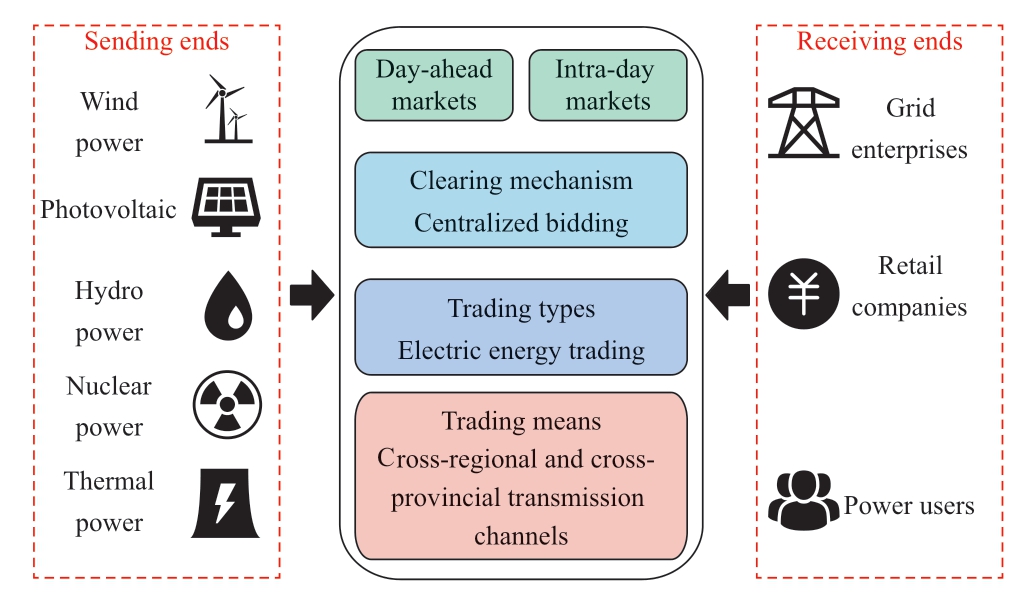
Fig.1 Trading framework of inter-provincial spot markets
The inter-provincial electricity spot markets adopt the market model of “unified market and two-level operation”as shown in Fig.2.
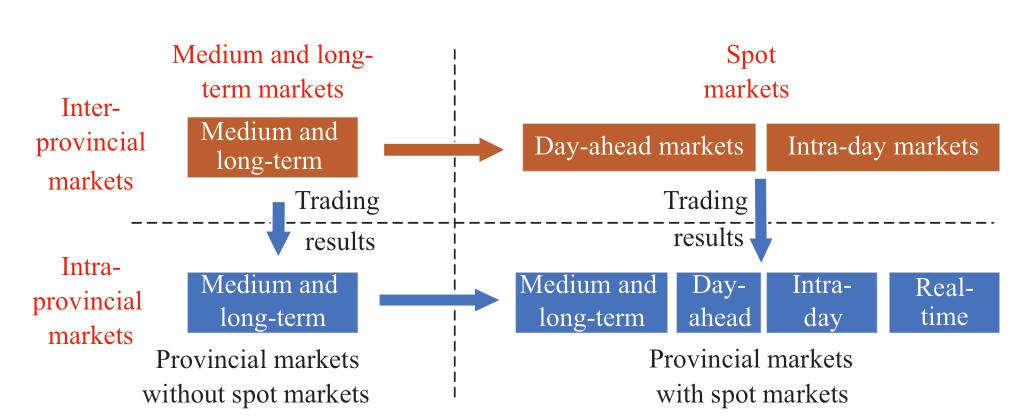
Fig.2 Schematic of “unified market,two-level operation”
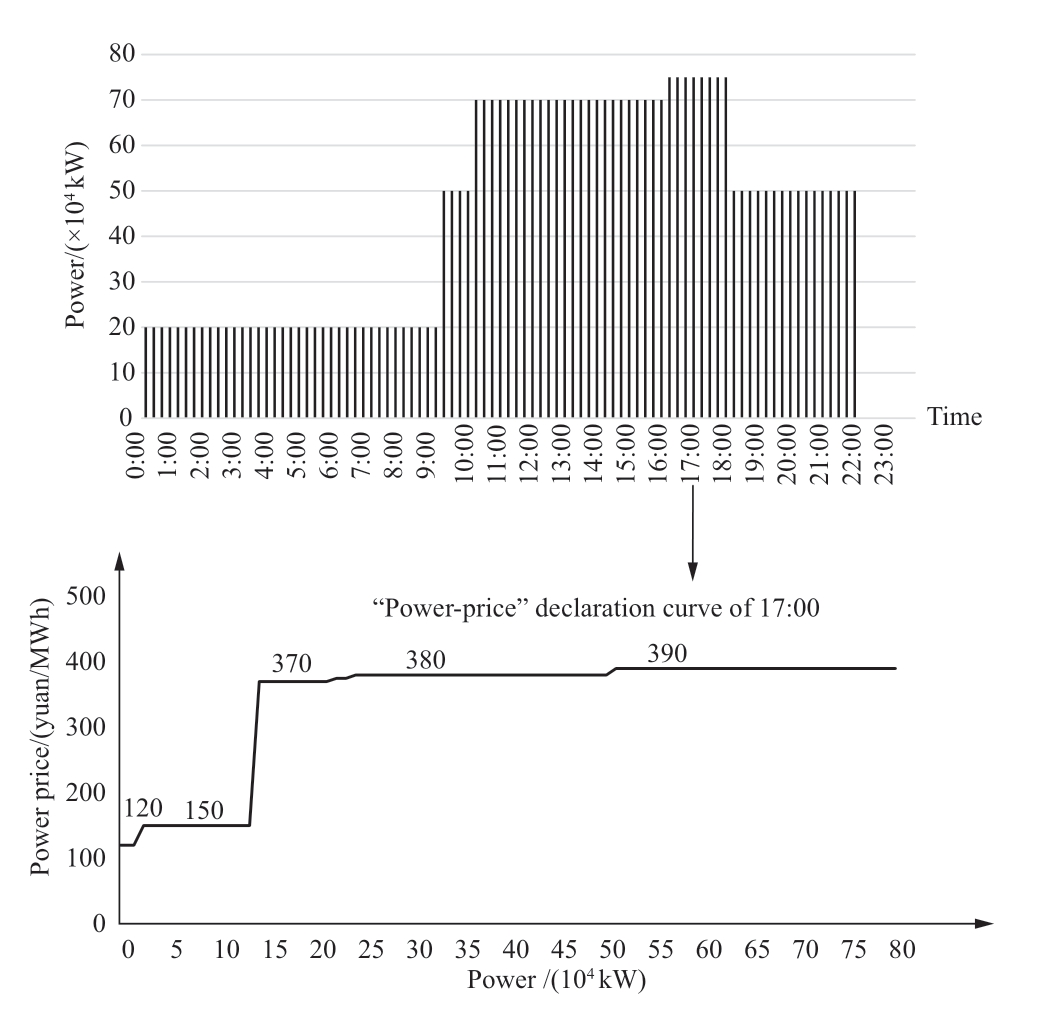
Fig.3 Multi-period “power-price” declaration curve of power generation entity
2.2 Trading and clearing mechanism
2.2.1 Trading model of the market
Inter-provincial spot markets generally regard provinces as the smallest trading units in the trading network-that is,as trading nodes.Two or more nodes were defined as having significant intra-provincial congestion.Inter-provincial and intra-provincial transmission channels linked by nodes between buyers and sellers are trading paths,which,together with trading nodes,constitute the trading network [7].
The trading mathematical model of inter-provincial spot markets is as follows.

where Cn denotes the price difference of the transaction combination and Pn represents the electricity of the transaction combination.
2.2.2 Bidding method of the market
For the bidding method,inter-provincial spot markets allow all types of entities to declare multi-period “powerprice” curves,including power generation and load entities,and a maximum of five segments of curves can be bid for each trading session (15 min) [5].Market entities declare the “power-price” curve based on the surplus and shortage,which is more conducive for them to flexibly participate in market transactions.
Figure 3 is an example of a power generation entity(the curves of load entities are similar),with a multi-period“power-price” declaration curve.The top part shows the power curve of the entity within 24 h,whereas the bottom part shows the power-price curve of the entity at 17:00.The entity declares five curves during the trading period.
2.2.3 Clearing steps of the market
Inter-provincial electricity spot markets use a centralized clearing mechanism and a sub-node marginal pricing mechanism that considers the available capacity of channels,network losses,and transmission prices.It consists of four steps: conversion of electricity and price,transaction pair matching,transaction volume matching,and calculation of the clearing price.
1) Conversion of electricity and price.Considering the path transmission charges and network losses,the buyers’electricity and price are converted to the seller nodes according to the transaction paths.
2) Transaction pair matching.The demand for electricity purchase and sale is matched to calculate the price difference between each trading combination to form a price difference sequence.
3) Transaction volume matching.Transactions are executed according to the price difference sequences,and the path is allocated according to the remaining available capacity of the channels (when the price differences are the same,transaction electricity is allocated by the bidding electricity).
4) Calculation of the clearing price.The sellers’marginal price is calculated by nodes;buyers’ node price=sellers’ node price+transmission and distribution price +network loss discount.
3 Evaluation index system of inter-provincial electricity spot markets
When evaluating the operational status of a specific aspect of an electricity market,it is common to analyze it from various perspectives,such as the market risks and market power [8].However,more comprehensive assessments are achieved by constructing an evaluation index system [9,10].Such evaluation index systems enable a more holistic consideration of various market factors,thereby providing more accurate and objective evaluation results.
Current research on the evaluation indexes of electricity markets is mainly based on the market force,market structure,market performance,identification of bad behaviors of market participants,and credit evaluation[11-17] Few studies have comprehensively considered the market positioning and operation mechanism of interprovincial spot markets to build an evaluation index system.
The system was based on the principle of ensuring the safe and stable operation of power grids,taking into account the effective connection between the market design and the existing power grid operation management systems,as well as safety management measures of inter-provincial spot markets.Additionally,the strategic goals of using interprovincial transmission channels to carry out electricity mutual aid through market-oriented methods,and assisting in the optimization of the large-scale allocation of resources in each province,considering the market status of multiple types of entities such as thermal power,nuclear power,power retail companies,power grid companies and users since the trial operation began.This study constructed an inter-provincial electricity spot market evaluation index system as shown in Fig.4 [14-17] have been applied widely,focusing on four themes of mutual aid and support of electricity,new energy consumption,economic benefits of market-oriented allocation and social benefits of market-oriented allocation.The aim is to evaluate the operation of inter-provincial spot markets quantitatively and comprehensively [14].
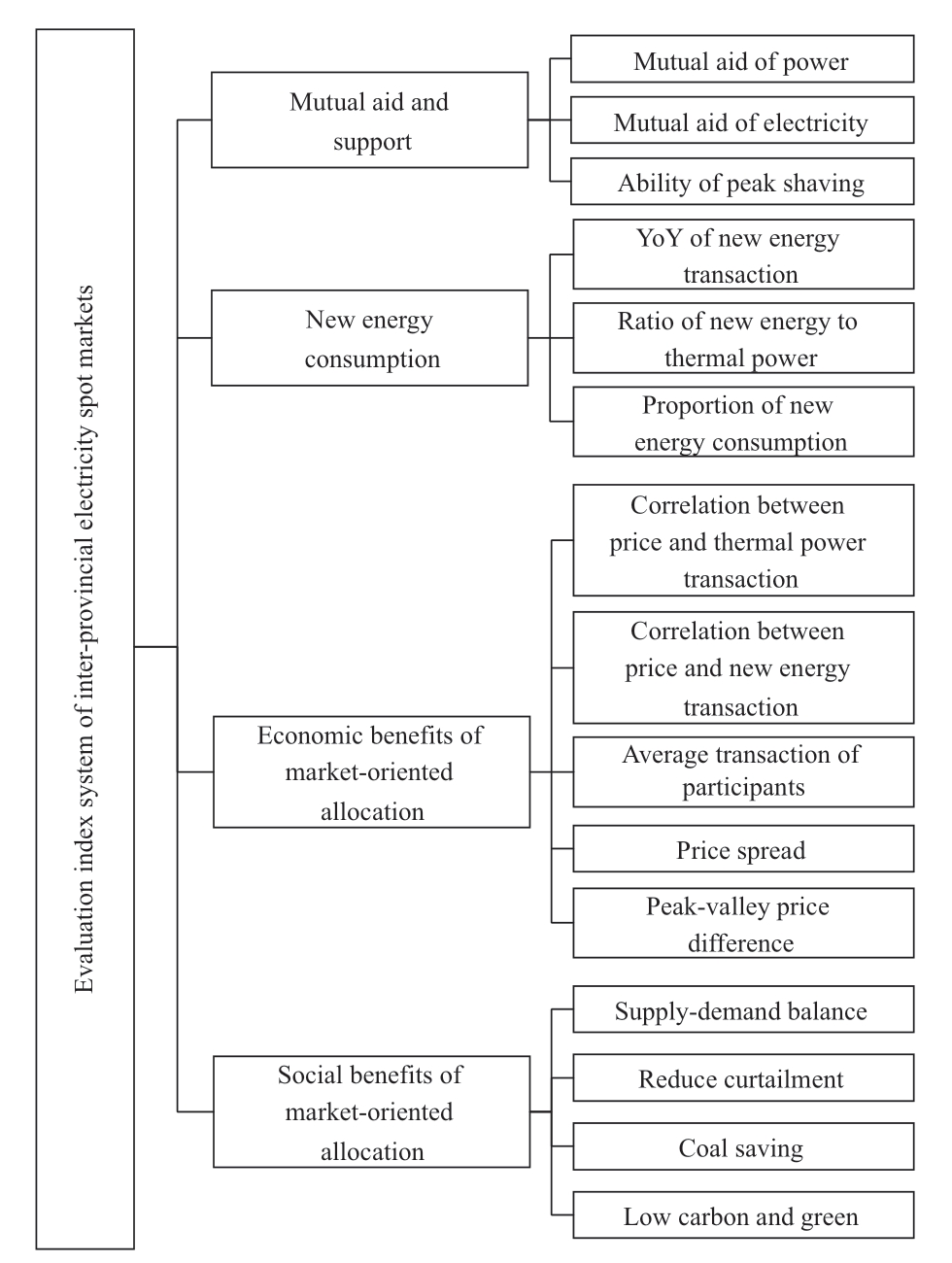
Fig.4 Evaluation index system of inter-provincial electricity spot markets
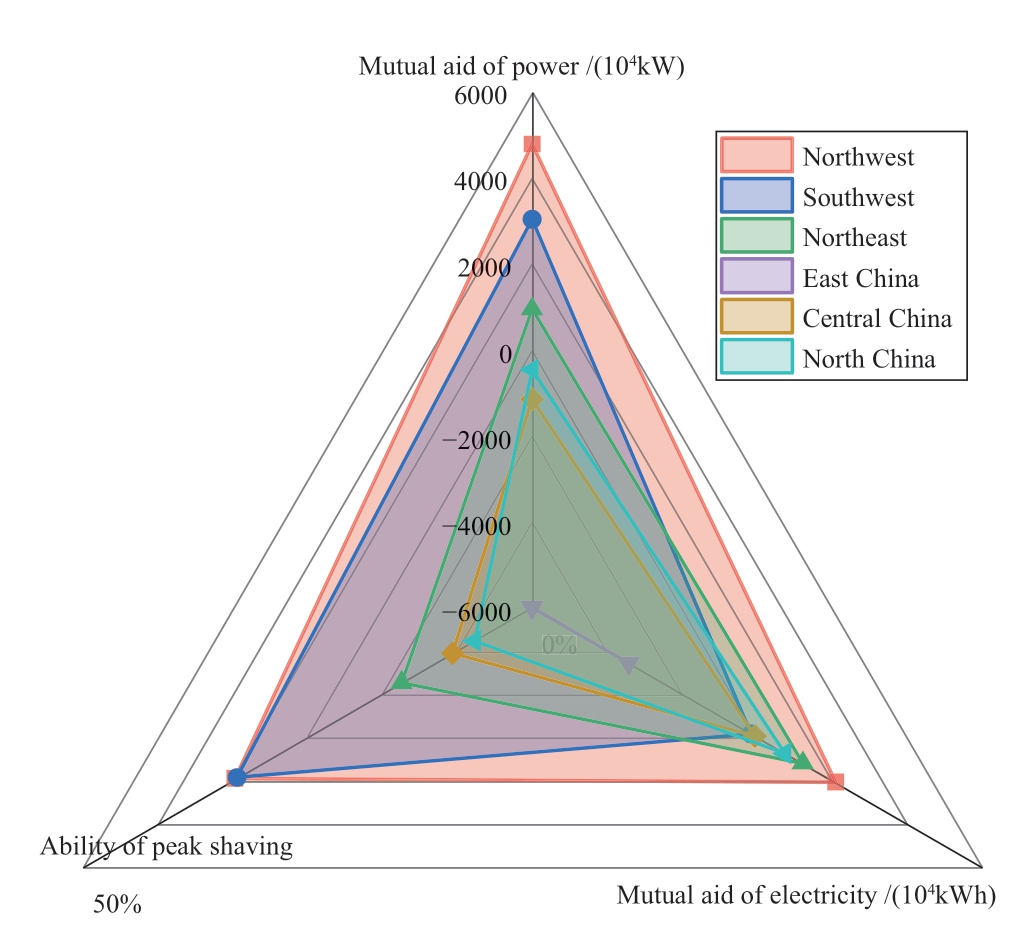
Fig.5 Radar chart of mutual aid and support indexes
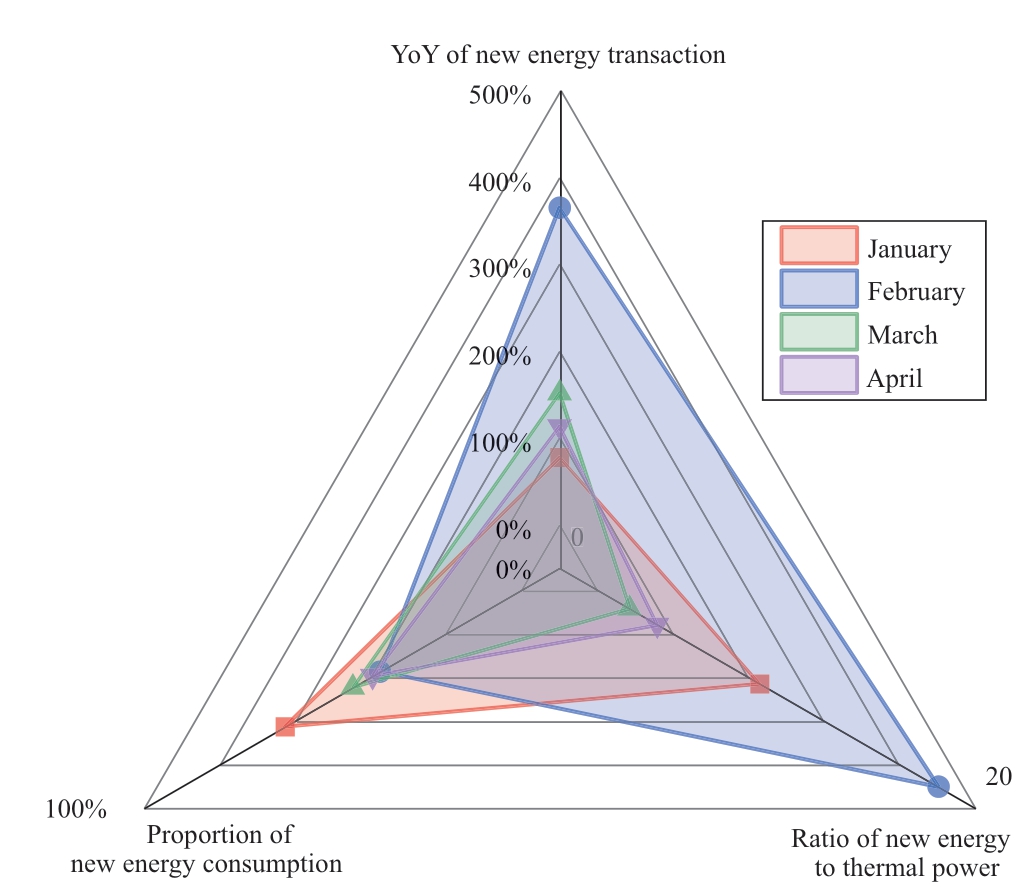
Fig.6 Radar chart of new energy consumption indexes
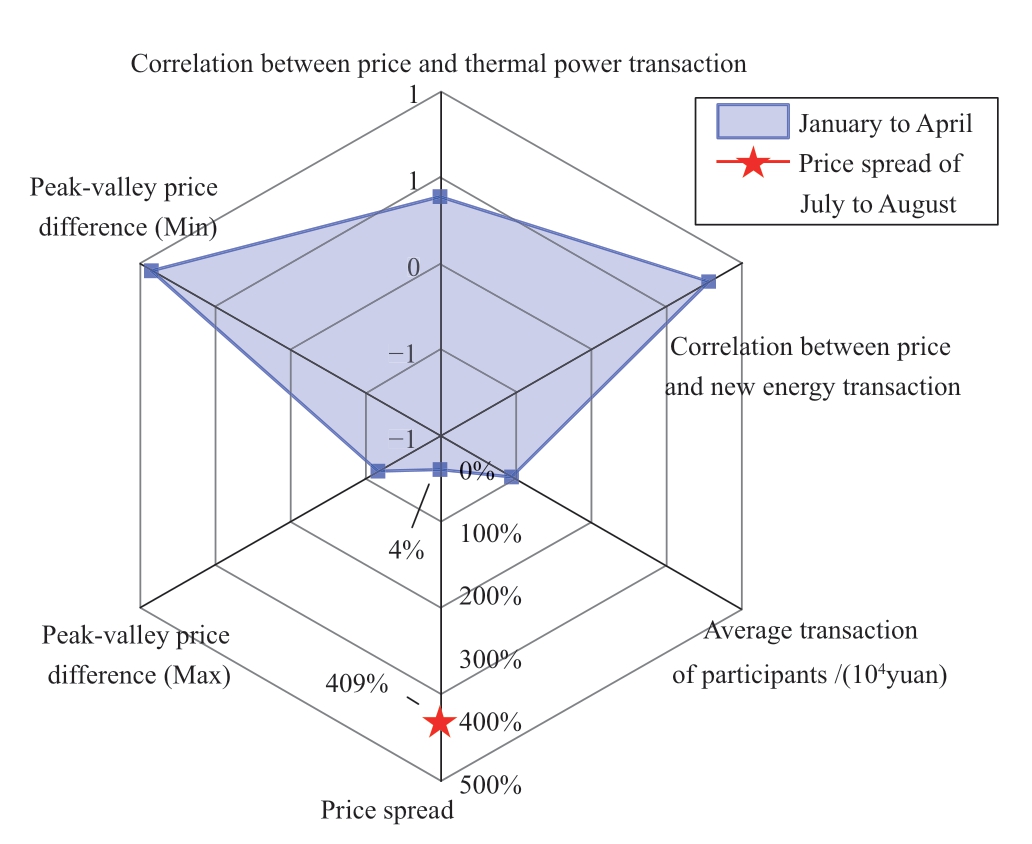
Fig.7 Radar chart of economic benefits of market-oriented allocation indexes
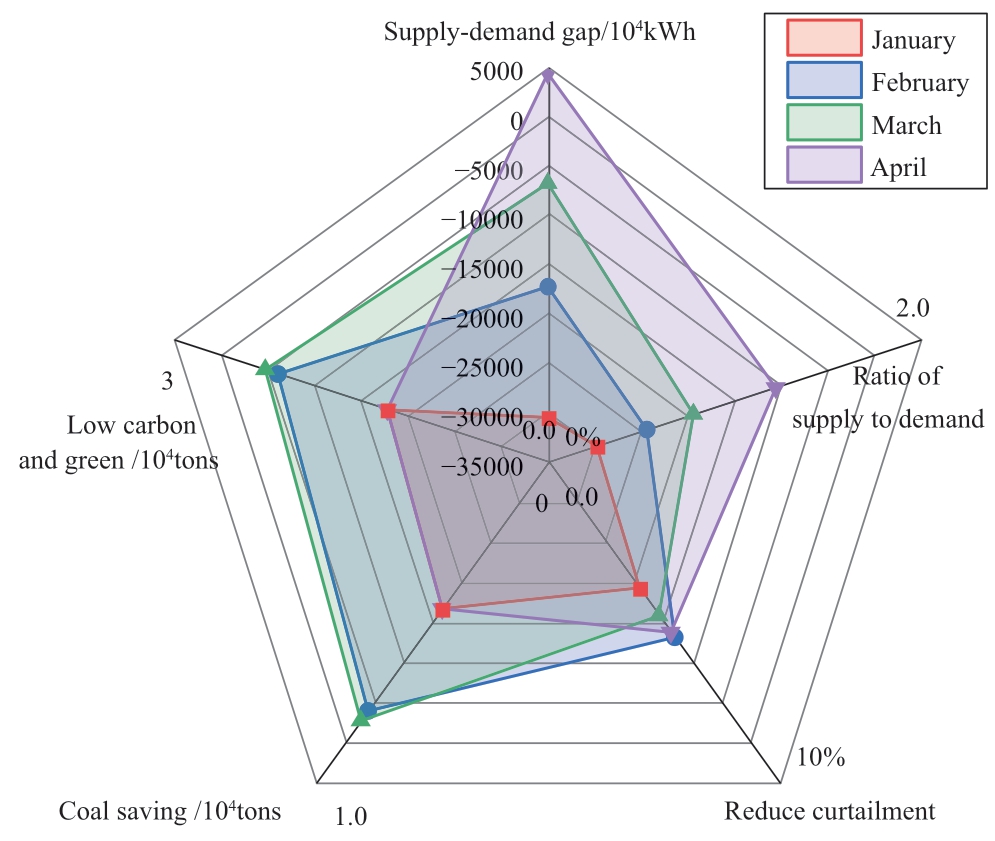
Fig.8 Radar chart of social benefits of market-oriented allocation indexes
3.1 Mutual aid and support
Mutual aid and support includes three indexes of mutual aid of power,mutual aid of electricity,and ability of peak shaving.The indexes are based on the power and electricity data of inter-provincial electricity spot markets to evaluate the effect of electricity surplus and shortage of mutual aid in the market and to realize the optimal allocation of resources [13,14].The calculation formulas for the indexes are as follows:
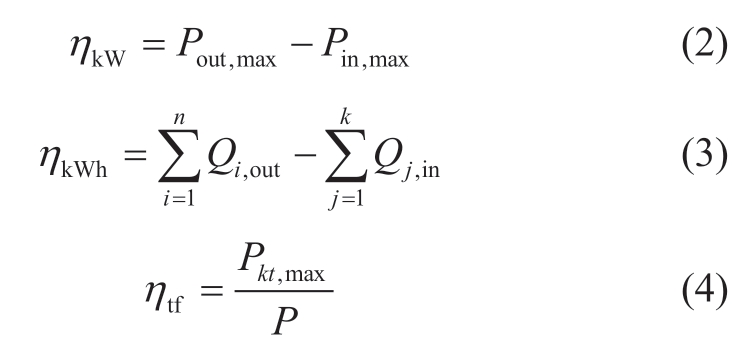
where ηkW is the mutual aid of the power index,Pout,max is the maximum sent power of the provinces or regions,and Pin,max is the maximum received power of the provinces or regions.ηkWh is the mutual aid of the electricity index;Qi,out is the electricity sent out from one province or region to another province i or region i;n is the total number of provinces or regions;Qj,in is the electricity received from province j or region j;k is the total number of provinces received.ηtf is the peak shaving index,Pkt,max is the maximum adjustable capacity of the power generators in the province or region,and P is the total power generation of the province or region.
3.2 New energy consumption
New energy consumption is composed of three indexes:YoY of new energy transaction,ratio of new energy to thermal power,and proportion of new energy consumption.These indexes evaluate the effect of promoting the consumption of new energy through market-oriented means on a large scale [15-18].The calculation formulae are as follows:
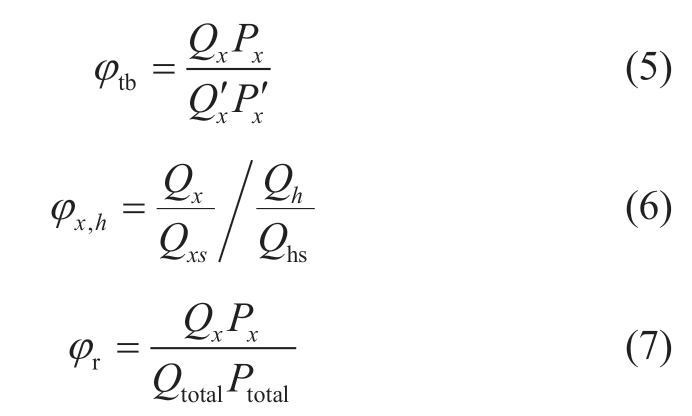
where φtb is the YOY of the new energy transaction index,Qx is the traded electricity of new energy in the interprovincial electricity spot markets,Px is the average price of new energy in the markets, is the traded electricity in the cross-regional inter-provincial surplus renewable energy spot markets in the same period last year,and
is the traded electricity in the cross-regional inter-provincial surplus renewable energy spot markets in the same period last year,and  is the average price of the markets in the same period last year.φx,h is the ratio of new energy to thermal power index,Qxs is the declared electricity of new energy,Qh is the traded electricity of thermal power,and Qhs is the declared electricity of thermal power.φr is the proportion of the new energy consumption index,Qtotal is the total electricity traded in the inter-provincial spot market of the province or region,and Ptotal is the average traded price in the market of the province or region [19].
is the average price of the markets in the same period last year.φx,h is the ratio of new energy to thermal power index,Qxs is the declared electricity of new energy,Qh is the traded electricity of thermal power,and Qhs is the declared electricity of thermal power.φr is the proportion of the new energy consumption index,Qtotal is the total electricity traded in the inter-provincial spot market of the province or region,and Ptotal is the average traded price in the market of the province or region [19].
3.3 Economic benefits of market-oriented allocation
The economic benefits of market-oriented allocation include the correlation between the price and thermal power transactions,correlation between price and new energy transactions,average transactions of participants,price spread,and peak-valley price difference [20,21].This is mainly done to assess the role of inter-provincial electricity spot trading in making full use of inter-provincial transmission channels,reducing the transaction costs,increasing the transaction revenue,and stabilizing the transaction prices.The calculation formulae are as follows:
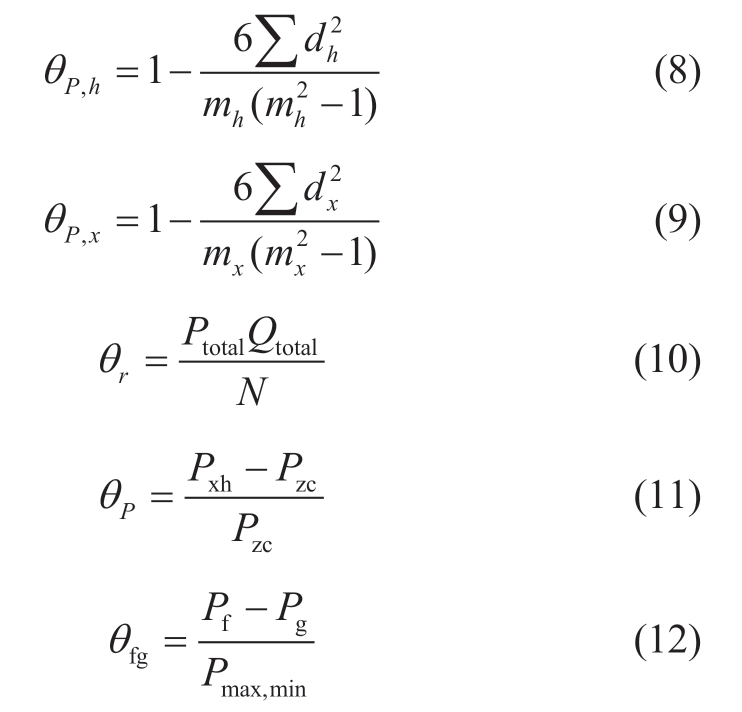
where θP,h is the Spearman rank correlation coefficient between the market clearing price and thermal power transaction,θP,x is the Spearman rank correlation coefficient between the market clearing price and new energy transaction,dh is the rank difference between the original data of the market clearing price α and thermal power electricity β1 in descending order,dx is the rank difference between the original data of the market clearing price α and new energy electricity β2 in descending order,and mh and mx are the amount of data.θr is the average transaction of the participants’ index and N is the number of power generation companies that participate in the inter-provincial electricity spot markets in this province or region.θP is the price spread index,Pxh is the inter-provincial spot trading price,and Pzc is the inter-provincial medium-and long-term trading price.θfg is the peak-valley price difference index,Pf is the trading price of the peak period,Pg is the trading price of the valley period,and Pmax,min is the maximum or minimum annual time-sharing price.
3.4 Social benefits of market-oriented allocation
Social benefits of market-oriented allocation includes four indexes of the supply-demand balance,reduced curtailment,coal saving,and low carbon and green values.They analyze the role of the inter-provincial electricity spot markets on narrowing the power supply-demand gap,reducing new energy curtailment,and enhancing the green and low-carbon value of the markets [22].These are calculated as follows:
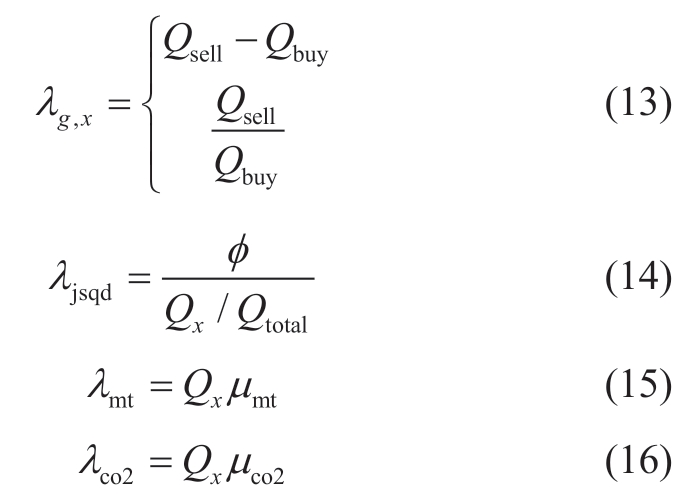
λg,x is the supply-demand balance index,Qsell is the electricity declared by sellers in the inter-provincial electricity spot markets,and Qbuy is the electricity declared by buyers in the markets.λjsqd is the reduced curtailment index,and φ is the curtailment rate of the province or region.λmt is the coal saving index and μmt is the coal consumption coefficient per kWh.λco2 is the low-carbon and green index and μco2 is the carbon emission coefficient per kWh.
4 Example analysis
After the formal approval of the inter-provincial spot rules by NDRC and NEA,since January 1,2022,the State Grid Corporation has carried out multiple rounds of trial runs of inter-provincial electricity spot market transactions for two days,an entire week,entire month,entire quarter,and one half year in accordance with the principle of “safety first,positive and prudent,step by step.” In this section,based on the inter-provincial electricity spot market data in China during the four rounds of operation from January to April 2022,numerical radar diagrams of the indexes are plotted,and a comprehensive analysis is conducted in combination with the inter-provincial electricity spot market evaluation index system proposed in this study [23,24].
4.1 Mutual aid and support indexes
1) Mutual aid of power
Taking the six major regions within the scope of the State Grid Corporation as an example,the average daily mutual aid of power indexes from January to April in Northwest,Southwest,Northeast,East,Central and North China are 4,810,3,050,951,-5,982,-1,145,and -455/(104 kW),respectively.Here,Northwest,Southwest and Northeast mainly send power,East China mainly receives power,and Central and North China both send and receive power.
The results of the index calculation show that the inter-provincial electricity spot markets have realized the mutual aid of power surplus and shortage through marketoriented means,and regions with abundant new energy resources have maintained a high level of outbound power transmission,which has significantly impacted the power shortage in high-load areas such as East China and guaranteed power demand,whereas Central China and North China have flexibly carried out power delivery and receiving transactions according to their own demands and market conditions.
2) Mutual aid of electricity
Taking the six regions as an example,the average daily mutual aid of electricity indexes from January to April in Northwest,Southwest,Northeast,East,Central and North China were 2,120,-130.00,1,246.67,-3,416.67,-33.33,and 766.67/(104 kWh),respectively.
Northwest and Northeast China mainly sold electricity,East and Central China mainly purchased electricity,and Southwest and North China flexibly chose to participate in the markets as purchasers or sellers according to the conditions.Purchasing electricity to ensure supply during insufficient periods and selling electricity to promote consumption during surplus periods fully reflects the activity and flexibility of inter-provincial spot markets and realizes the optimal deployment of electricity resources [25].
3) Ability to shave peaks
For typical delivery regions,such as northwest,southwest,and northeast China,the average daily peak shaving indexes from January to April were 33.11%,32.86%,and 14.53%,respectively.
The indexes showed that the peak-shaving ability of the main delivery regions was abundant,and the adjustable capacity accounted for more than 40% on average,which could effectively guarantee power supply during the summer peak.
4.2 New energy consumption indexes
1) YoY for new energy transactions
Several trial runs of inter-provincial electricity spot trading in 2022 further promoted new energy consumption.Compared with the cross-regional inter-provincial surplus renewable energy spot trading in the same period in 2021,the average daily trading volume of new energy from January to April increased by 77.42%,365.46%,151.86%,and 113.04%,respectively,owing to the massive generation of new energy in spring.The year-on-year growth rate was apparent,achieving a larger transaction volume growth in new energy and stimulating the enthusiasm of new energy generators.
2) New energy to thermal power ratio
From January to April,the average daily ratios of new energy to thermal power indexes were 9.68,18.31,3.40,and 4.73,respectively,indicating that the trading mechanisms of inter-provincial electricity spot markets were more adaptable to the characteristics of new energy power generation.The effectiveness of the market mechanisms made the success rate of new energy transactions much higher than that of thermal power,even in the spring,which promoted the participation of new energy entities in transactions and reduced new energy curtailment.
3) Proportion of new energy consumption
From January to April,the average daily proportions of new energy consumption indexes were 66.30%,43.33%,49.86%,and 45.16%,respectively,and the number of new energy transactions in inter-provincial spot trading was almost stable at nearly half of the market value,in line with market design expectations.
4.3 Economic benefits of market-oriented allocation indexes
1) Correlation among price,thermal power transactions,and new energy transactions
Spearman’s coefficient calculates the monotonic linear relationship between two continuous or ordinal variables and reflects closeness.The value lies between [-1,1];the closer the value is to 0,the weaker the correlation,and as the value moves towards -1 or 1,the correlation increases.
The results indicated that the correlation coefficients from January to April between the price and thermal power transactions and the new energy transaction were 0.39 and 0.79,which implies that the market-clearing price was positively correlated with the trading volume of thermal power and new energy,and the correlation between the price and new energy transactions was stronger than that of thermal power transactions,which is in line with the market expectations.
2) Average transactions of participants
The average transaction of participants in the sell-side markets was 11,900 yuan in four months;for each month,the indexes were 7,300,19,700,14,200,and 6,300 (yuan).The development of inter-provincial spot trading effectively stimulated the generation of thermal power and new energy as well as expanded the overall market trading volume [25].
3) Price spread
Regarding the average daily transaction price,interprovincial spot trading fully reflected the relationship between supply and demand;the price spread index was only 4.00%,giving full play to the guiding role of market price signals.However,owing to the highest temperature,longest time,maximum load,and minimum hydropower during summer,the price spread reached 409%.Provinces facing power shortages continue to purchase high-priced external electricity,leading to soaring electricity costs.Electricity markets in purchasing provinces and regions incur huge losses [26-28].
4) Peak-valley price difference
Based on the transaction prices of multi time intervals from January to April,the average daily highest price for inter-provincial spot electricity delivery was 1.59 (yuan/kWh),whereas the lowest price was 0.34 (yuan/kWh).The peak-valley price difference indexes were 0.62 and 2.88,indicating a more noticeable price difference between the peak and valley periods compared with the maximum or minimum transaction prices.The price signals fully reflect the market supply and demand.
4.4 Social benefits of market-oriented allocation indexes
1) Supply/demand balance
From January to April,the average daily supply-demand gap was -304.77,-172.55,-66.74,44.60/GWh,and the average daily ratios of supply to demand were 0.26,0.53,0.78,and 1.22,respectively.With the continuous settlement and trial operation of inter-provincial electricity spot markets,the supply-demand gap changed from negative to positive and gradually narrowed,and the supply-demand ratio also tended to be reasonable.The mutual-benefit effect of the market-oriented electricity surplus and shortage was apparent,which guaranteed the electricity supply of the overall markets and was in line with market expectations.However,it is still necessary to focus on the balance point of supply and demand in the market to avoid the trend of the supply being far greater than the demand,resulting in abnormal prices and losses on the power generation side.
2) Reducing curtailment
From January to April,the average daily reductions in the curtailment indexes of inter-provincial spot trading are 3.95%,5.50%,4.82%,and 5.33%,respectively.Interprovincial spot trading significantly reduced new energy curtailment and maintained a low abandonment rate of approximately 3%,which provided a guarantee for the further growth of a new energy installed capacity [29].
3) Coal saving
From January to April,the average daily transaction volumes of new energy were 15.18,25.43,26.60,and 15.16/106 kWh,which were equivalent to daily average savings of 4,600,7,800,8,100,and 4,600 tons of standard coal,respectively,based on the coal consumption coefficient of 0.3055/(kg/kWh).The large-scale consumption of new energy by inter-provincial spot markets has promoted the upgrade and transformation of China’s energy structure and reduced the consumption of non-renewable fossil energy resources such as coal.
4) Low carbon and green source
The average daily transaction volume of new energy from January to April,with a carbon emission coefficient of 0.853/(kg/kWh),was equivalent to daily reductions of 12,900,21,700,22,700,and 12,900 tons of carbon dioxide emissions,respectively.The social benefits of inter-provincial electricity spot markets were apparent and strongly responded to the general policy of carbon peaking and China’s carbon neutrality goals.
5 Conclusion
This paper first summarized the development history and construction status of inter-provincial electricity spot markets since cross-regional inter-provincial surplus renewable energy spot trading started,and sorted out the operation framework,trading mechanism,and clearing methods of inter-provincial spot markets.On this basis,this study proposed an inter-provincial electricity spot market evaluation index system that contained four themes and 15 indexes,comprehensively reflecting the mutual aid and support of power and electricity,new energy consumption,and the economic and social benefits of the marketoriented allocation of inter-provincial spot markets.An example analysis demonstrated that the evaluation index system constructed in this study comprehensively reflects the operation status of the inter-provincial spot markets,provides an effective reference for a comprehensive analysis and evaluation of inter-provincial spot markets,promotes stable and healthy market development,and further completes the inter-provincial market systems.
The analysis of the first four rounds of operations in China’s inter-provincial spot markets in 2022 showed that the markets were generally stable.However,interprovincial spot trading still faces common issues such as inadequate information disclosure,unreasonable price limits,and ineffective downstream transmission of cost burdens.Cross-provincial and cross-regional transactions are yet to be fully liberalized,with incomplete participation from the market entities [30,31].As the electricity market reform progresses,there is a continual need to expand the liberalization of cross-provincial spots and mediumand long-term transactions.It is imperative to promptly summarize the experiences and lessons from market operations and identify problems so that the trading rules can be revised and enhanced.
Acknowledgments
This work was partly supported by State Grid Jibei Electric Power Company Limited (no.SGJBJY00GPJS2310051)and Natural Science Foundation of Beijing Municipality(no.9242015).
Declaration of competing interests
We declare that we have no conflict of interest.
References
[1] Liu Y,Jiang Z G,Guo B W (2022) Assessing China’s provincial electricity spot market pilot operations: Lessons from Guangdong Province.Energy Policy,164: 112917
[2] Bao M L,Guo C,Wu Z J,et al.(2019) Review of electricity spot market reform in China: Current status and future development.2019 IEEE Sustainable Power and Energy Conference (iSPEC),Beijing,China,pp: 1444-1448
[3] Chen Y,Wang H,Yan Z,et al.(2022).A two-phase market clearing framework for inter-provincial electricity trading in Chinese power grids.Sustainable Cities and Society,85: 104057
[4] Zhao J Q,Wu T J,Lin S B,et al.(2023) Comparison of two market clearing modes for day-ahead power market incorporating third-party entity.Electric Power Engineering Technology,42(6):241-248
[5] Ren J,Zhou X,Xue C,et al.(2022) Spot market joint clearing mode with both sides of generation and customer participating in peak regulation.Electric Power Engineering Technology,41(1):26-33
[6] Li W Y,Dong F G,Ji Z S,et al.(2023) Evaluation of provincial power supply reliability with high penetration of renewable energy based on combination weighting of game theory-TOPSIS method.Sustainable Energy,Grids and Networks,35: 101092
[7] Shi X H,Zheng Y X,Fan Z Y,et al.(2020) Model design considering participation of variable renewable energy in provincial spot market.Journal of Global Energy Interconnection,3(5): 451-460
[8] Cai Z,Li Q,Dai S (2021) Discussion on key technologies and model for hydropower-dominated electricity spot market in Sichuan.2021 China International Conference on Electricity Distribution (CICED),Shanghai,China,pp: 1074-1078
[9] Bao M,Ding Y,Zhou X,et al.(2021) Risk assessment and management of electricity markets: A review with suggestions.CSEE Journal of Power and Energy Systems,7(6): 1322-1333
[10] Shang N,Ding Y,Cui W Q (2021) Review of market power assessment and mitigation in reshaping of power systems.Journal of Modern Power Systems and Clean Energy,10(5): 1067-1084
[11] Lin X S,Huang T,Bompard E,et al.(2023) Ex-ante market power evaluation and mitigation in day-ahead electricity market considering market maturity levels.Energy,278: 127777
[12] Hong Y R,Liu F B,Chen Z Y,et al.(2022) Design and research on comprehensive evaluation index of China regional electricity market.2022 9th International Forum on Electrical Engineering and Automation (IFEEA),Zhuhai,China,pp: 15-19
[13] Yuan X,Xia H T,Lou X D (2023) Comprehensive evaluation index system for the operation of power markets.2023 8th Asia Conference on Power and Electrical Engineering (ACPEE),Tianjin,China,pp: 1009-1014
[14] Chang L,Chen Z H,Ding Q,et al.(2021) Design and application of operation evaluation index system for spot electricity market.2021 6th Asia Conference on Power and Electrical Engineering(ACPEE),Chongqing,China,pp: 616-624
[15] Falbo P,Fattore M,Stefani S.(2010) A new index for electricity spot markets.Energy Policy,38(6): 2739-2750
[16] Zhao L,He X L,Fan L,et al.(2021) The evaluation index system and method of electricity spot market based on scp theory.2021 IEEE 5th Conference on Energy Internet and Energy System Integration (EI2),Taiyuan,China,pp: 3523-3527
[17] Fang B M,Qiu W Q,Wang M C,et al.(2022) Evaluation index system of shared energy storage market towards renewable energy accommodation scenario: A China’s Qinghai province context.Global Energy Interconnection,5(1),77-95
[18] Liu L,Chen X,Li D,et al.(2023) Evaluation method for assessing the auxiliary service transaction mechanism in regional power markets.Global Energy Interconnection,6(2): 234-248
[19] Zhang Z Y,Lu H Z (2020) Research on power spot market comprehensive index system and evaluation method.2020 IEEE 4th Conference on Energy Internet and Energy System Integration (EI2),Wuhan,China,pp: 3479-3484
[20] Liu Q H,Hu S C,Zhou W C (2022) Optimal design of electricity plans based on electricity retailers participation in spot market.Electric Power Engineering Technology,41(1): 19-25
[21] Song M,Amelin M,Wang X,et al.(2019) Planning and operation models for EV sharing community in spot and balancing market.IEEE Transactions on Smart Grid,10(6): 6248-6258
[22] Vu D H,Muttaqi K M,Agalgaonkar A P,et al.(2019) Short-term forecasting of electricity spot prices containing random spikes using a time-varying autoregressive model combined with kernel regression.IEEE Transactions on Industrial Informatics,15(9):5378-5388
[23] Bibi N,Shah I,Alsubie A,et al.(2021) Electricity spot prices forecasting based on ensemble learning.IEEE Access,9: 150984-150992
[24] Verma P P,Hesamzadeh M R,Baldick R,et al.(2021) Bayesian Nash Equilibrium in electricity spot markets: An affine-plane approximation approach.IEEE Transactions on Control of Network Systems,9(3): 1421-1434
[25] Mu C,Xing Y,Zhang F,et al.(2021) The coordination mechanism of forward market and spot market under the costbased electricity market model for Yunnan.2021 6th Asia Conference on Power and Electrical Engineering (ACPEE),Chongqing,China,p 634-639
[26] Wang X L,Liu W X,Liang G Q,et al.(2021) Lessons learned from power industry reform and electricity spot market trial operation in Southern China.Energy and Climate Change,2: 100055
[27] Zhang Y Y,Zhao H R,Li B,et al.(2022) Research on credit rating and risk measurement of electricity retailers based on Bayesian Best Worst Method-Cloud Model and improved Credit Metrics model in China’s power market.Energy,252: 124088
[28] Wang W T,An A M,Zhang Z P,et al.(2023) Early-warning of generator collusion in Chinese electricity market based on Information Deep Autoencoding Gaussian Mixture Model.Electric Power Systems Research,221: 109425
[29] Sun B,Deng R L,Ren B,et al.(2022) Identification method of market power abuse of generators based on lasso-logit model in spot market.Energy,238: 121634
[30] Qu Y,Xiao Y P,Wang X L,et al.(2023) The equilibrium analysis and potential modifications on the China pilot electricity spot market.Energy Economics,122: 106693
[31] Zhang M,Wang H,Gao Y.(2023) Security constrained economic dispatch: Considering contractual performance ability evaluating of power producers using TOPSIS method in spot market environment.Energy Reports,9: 343-352

Scan for more details
Received: 18 September 2023/
Revised: 22 January 2024/ Accepted: 5 May 2024/ Published: 25 December 2024
 Yang Hu
Yang Hu
huyanghd@163.com
Hao Yue
yuehao410@163.com
Yu Zhang
763446638@qq.com
Jiahao Guo
646017107@qq.com
Chengmei Wei
w_chengmei524@163.com
Heping Jia
jiaheping@ncepu.edu.cn
Dunnan Liu
liudunnan@163.com
Dunjian Xie
dunjian.xie@ntu.edu.sg
2096-5117/© 2024 Global Energy Interconnection Group Co.Ltd.Production and hosting by Elsevier B.V.on behalf of KeAi Communications Co.,Ltd.This is an open access article under the CC BY-NC-ND license (http://creativecommons.org/licenses/by-nc-nd/4.0/).
Biographies

Hao Yue received Ph.D.from the North China Electric Power University in 2014.He works at the State Grid Jibei Electric Power Economic Research Institute in Beijing,China.His research interests include power grid planning and energy economy.

Yu Zhang received a Master’s degree from North China Electric Power University in 2020.She works at the State Grid Jibei Electric Power Economic Research Institute in Beijing,China.Her research interests include power grid planning and primary electrical equipment.

Jiahao Guo received a master’s degree from Tsinghua University,Beijing in 2021.He works at the State Grid Jibei Electric Power Economic Research Institute in Beijing,China.His research interests include power grid planning and primary electrical equipment.

Yang Hu received a Bachelor’s degree from the North China Electric Power University in 2021.He is working toward a master’s degree at the North China Electric Power University,Beijing.His research interests include electricity markets and connections.

Chengmei Wei received Bachelor’s and Master’s degrees from Sichuan University in 2016 and 2023,respectively.She works at the State Grid Jibei Electric Power Economic Research Institute in Beijing,China.Her research interests include high-voltage insulation technologies.

Heping Jia received a Bachelor’s degree from the North China Electric Power University in 2014.She received a Ph.D.from Zhejiang University in 2019.She works at the North China Electric Power University,Beijing.Her research interests include electricity markets and connections.

Dunnan Liu received a Bachelor’s degree and PhD degree from Tsinghua University in 2001 and 2006,respectively.He is currently working at the North China Electric Power University,Beijing.His research interests include electricity markets and connections.

Dunjian Xie received his B.Eng.and M.Sc.degrees in Electrical Engineering from Zhejiang University in 2016 and 2019,respectively.He obtained his Ph.D.in Electrical Engineering from Nanyang Technological University in 2024.Currently,he is a Research Fellow at Nanyang Technological University.His research interests include power system resilience,stability-constrained optimization,and electricity market.
(Editor Zedong Zhang)
